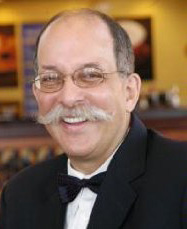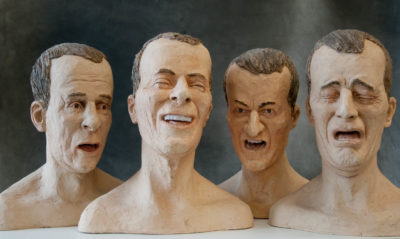 Auditing the Auditors, part III of III: A Quality Assurance Program for the 21st Century
Auditing the Auditors, part III of III: A Quality Assurance Program for the 21st Century
by Steven Ferry
In the first two articles in this series, we looked at how independent Quality Assurance programs have fallen into a conventional wisdom and modus operandi that is out of touch with their clients’ and their guests’ needs and then examined the challenges and relevance of QA in helping their client’s assess their performance in a world increasingly guided by the megaphone of social-media reviews.
In this third and last article, we look at what an ideal QA program would look like, in the hope that third-party QA companies, and/or internal QA programs are listening and decide to upgrade their assessments and programs.
For hoteliers to understand more accurately their strengths and weaknesses, and work effectively toward achieving their goals of guest comfort, convenience, satisfaction, and enjoyment, while themselves enjoying high occupancy levels and RevPAR, the ideal Quality Assurance service would incorporate at least the following changes:
1) By way of clarification, the author’s background is the superior-service world of the British butler, adapted to modern 5* hotels and resorts. This does not mean that he is implying that QA programs should only be targeted at the 1,500-2,500 luxury hotels around the world (depending on one’s definition), nor that economy hotels should be made into 5* star properties. But solicitous and speedy service should be just as organic in a Motel 6 as in a luxury hotel, and indeed, anywhere where service is provided, whether in a hospitality venue, a corporation, or a government agency— the police, justice system, and tax department included!
In this way, a proper QA program would have fundamental and non-negotiable standards of service, but would recognize that when it comes to facilities, standards need to be tailor made and agreed upon with each property, in order to provide the property with an assessment that will be of use to them, rather than the irrational requirement that they be judged by, and fit themselves into, an average statement of the industry that is based on the preferences and habits of two generations of guests (Silent and Baby Boomer) that are no longer the predominant demographic customer segments.
When setting the ideal for each property, the following would be taken into account, at least: City or resort; the preferences and goals of the guests in the geographical and consumer markets to which the property reaches out: For instance, broadly, Westerners are not so interested in face value, prestige, and status symbols, but for many Asian guests, these considerations are paramount, as are opportunities for photo opportunities and selfies; the purpose of the property (as broadcast through its branding and marketing, and supported by its location, structures, decor, ambiance, facilities, activities for guests to engage in, and service style). This ideal for each property’s facilities would need to be updated as markets inevitably undergo transformation.
2) An effective QA program would provide accurate feedback and analysis, as well as recommendations, on the public perception of the client property in the rapidly changing, inaccurate, and insufficiently monitored-and-controlled social-media landscape. It would not, however, rely solely on the remote and largely anonymous feedback characteristic of social media, encouraging as it does little or large exaggerations from Chicken Littles; but would analyze GSSs and more particularly, survey in-house guests at the time of the audit for that face-to-face experience that is more likely to elicit responsible feedback, as well as an accurate assessment of the emotional level and thus veracity of the person speaking—for a person’s emotional level betrays the accuracy or inaccuracy of their statements.
Having an accurate assessment of the public perception expressed in social media would point to a proper strategy to regain control of the public perception of their property (or chain), and would allow hoteliers to climb down from the treadmill of constant fretting over image management and to focus more on simply delivering a good guest experience that is after all, fundamental to the social media perception. The current set-up with social media is a bit like a hostess who constantly asks her guests for their feedback at a dinner party and introverts into handling any negative comments, and so loses the thread and momentum of the evening.
Criticism can do that to people, especially when unwarranted, but in the end, it violates the key butler modus operandi: the maintaining of one’s dignity and thus presence/standing. Not to discount the social media, and certainly not to recommend doing what some poor souls do: Ignore it to their own detriment. But there is a happy medium and that is intelligent assessment of the actual perception, rather then responding piecemeal to negative reviews, frantically and subserviently much like Uriah Heep in Charles Dickens’ novel David Copperfield (and no doubt Hollywood movies of the same name).
3) A good QA program would maintain its integrity for the guests by having no affiliation (as tempting a business model as it no doubt is) with a membership organization so that there is no impulse to lower standards in order to increase membership. The focus would be totally on accurate assessment in order to target areas for actual improvement.
4) For a QA service to bring about honest results that are accepted, rather than protested, by hoteliers, the auditors would have to be trained, and the system set up, to reflect accurately the guest experience. This means auditors who are trained to be a) consistent one with the other, and b) fair in the way they present problems and assess how the staff respond: unrealistic and complex scenarios posited that require more time to resolve, for instance, should not be held to the same standard of speed of resolution as everyday scenarios.
5) Similarly, beneficial QA results would provide more than just “Yes,” “No,” and N/A” feedback. This is the equivalent of Aristotle’s three-valued logic and not a very discerning way to assess anything in the days of infinity valued/fuzzy logic, which has been with us for well nigh a century. There has to be a balance between a system that has too much differentiation expressed, requiring the auditor enter opinions into the marks given, as they cannot realistically discern and justify, for instance, between a score of 72% and 75%—and too little differentiation. There is a happy medium that would provide enough information to reflect more accurately the status of each line item, and that would include text boxes to provide statements clarifying what occurred that resulted in a very good or bad judgment.
Giving marks without explanations is endemic in our school systems, and yet it is just as upsetting for a hotelier to receive a bad mark without knowing what happened, as it is for a child to receive an “F” in an exam or grade without knowing why, or being able to correct it. When one agrees to someone sitting in judgment, this kind of behavior is expected; but that does not make it right, and it certainly does not help right any errors noted. In essence, 100% should be a passing standard in any exam, because one loops back with the examinee to fix what they did not answer or execute correctly, and then the purpose of the exercise is achieved: not judgment and grading/pigeon-holing, but improvement.
5a) The standards would include assessment of all departments, including (excuse the brazen plug) the hundreds of butler departments around the world; and then there are other important areas that need assessing, and thus standards set—important because they are important to guests—yet for which there are no or very few standards set and assessed: Environmental standards; staff efficiency; and most vitally, assessing the emotional engagement by staffs with guests as well as with each other. As most managers know, without a finger on the pulse of, and ability to steer, the core issues that ultimately produce guest satisfaction—staff morale and emotional engagement or the caring that brings about solicitous service—they can work themselves ragged improving facilities and yet still fail utterly.
6) To be truly useful, a QA service would not just sit in judgment and then leave the property to its own devices for the next year: It would also provide an analysis with recommendations, and then work long-distance with the property, as a partner rather than an occasional judge, to improve the poor conditions found and to reinforce the strengths—whether facilitating training, consultation, or technical assistance through verified third parties. In order not to fall into the trap covered in #3 above, this full service would be part of the audit package purchased by the property up front, so there would be no question of test results being adjusted to increase revenue for the auditing company or any sister companies. In short, the QA service would help improve the conditions needed to keep guests returning based on their own experience, rather than the megaphoned words of fellow consumers they have never met, but whose words, accurate or not, reach far and wide on social media.
7) GMs generally find audits that include benchmarking against their local competitors to be of value in understanding how they are performing in their own market, but only a third felt benchmarking resulted in improved performance. So a good audit program would provide benchmarking, based on rigorous, tailor-made standards, and would place the emphasis not on besting the competition but on setting and implementing standards that actually improve the guest experience, and thus ultimately, the RevPAR, and their attractiveness to guests when compared with the local competition.
So a useful audit would combine
- a) an internal and professionally derived, comprehensive and confidential QA in the real world in order to maintain the standards that are designed to bring about a happy guest experience
with
- b) social-media monitoring in the virtual world and public domain, of guest reviews of the actual service received
into an actionable overview of performance and real standing to guide management at the operational, PR, and marketing levels.
For the final word on the ideal QA program, and the need, as expressed by the majority of GMs surveyed around the world, for the industry to up its game, it is probably best coming from the man who helped launch, and then run, LQA, the market leader in QA, for many years; for if anyone understands the challenges, successes, and shortfalls of the industry, it is Welf Ebeling, who has been intimately involved with the workings of the industry and then enjoyed the luxury of standing back far enough to see the big picture.
“There are fundamentals in service and guest handling that are timeless and applicable everywhere in the world. However, over the years, customer needs and expectations have changed. Quality Assurance can no longer be based solely on standards that were set at a time when middle-aged and retired Americans made up the main force of luxury travelers. When I joined the Leading Hotels of the World, some of the requirements at the time were that a hotel include a hamburger and a club sandwich on the menu, and a male guest wear jacket and tie in a fine-dining room. Asia was, by and large, an incoming destination that catered to Western tourists.
“All this has changed, and hotels have to gear up to meet the needs of today’s customer, who in the luxury sector, could very likely be a millennial billionaire arriving in T-shirt and jeans, or a group of affluent Chinese single ladies outspending by far Western travelers on average. A genuine desire to take care of a customer’s needs, even if it is not perfectly executed, is far more important than robotic, drilled standards lacking in warmth and compassion.”
Originally published by Hotel Business Review in November, 2018. Also published in HotelExecutive.com

